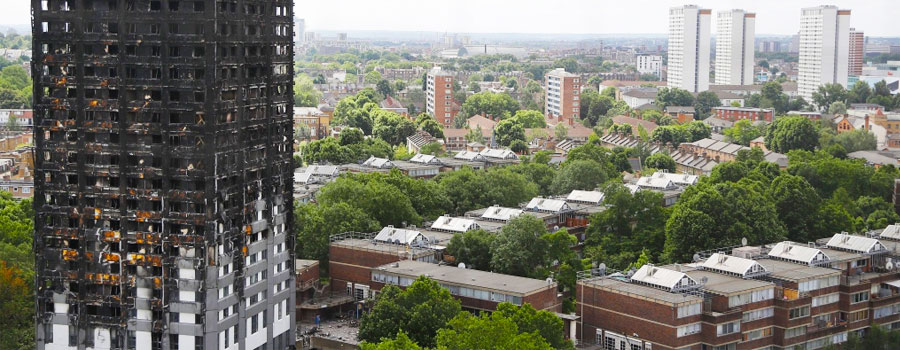
Update from Cladding Safety Victoria
The Cladding Safety Victoria Bill 2020 (Vic) (CSV Bill) was introduced to the Victorian Legislative Assembly on 3 September 2020 and given Royal Assent on 4 November 2020. Among its key points is giving homeowners an additional two years (up from 10) to pursue legal action against builders responsible for installing flammable cladding on their properties.
In summary, the CSV Bill will:
- establish Cladding Safety Victoria (CSV) as a separate organisation
- define how CSV will administer the cladding rectification program in Victoria
- extend the limitation period from 10 to 12 years for cladding building actions
- transfer the existing cladding rectification functions from the Victorian Building Authority to CSV.
High-risk cladding in Victoria
Melbourne was shocked by a building cladding fire at the Lacrosse residential tower in Docklands in 2014, which was followed by the terrible Grenfell Tower fire in London in 2017 that claimed 72 lives.
Some modern buildings use insulated external cladding systems such as aluminium composite panels or expanded polystyrene, which are now considered dangerous. They are often hidden behind render or are part of a pre-finished wall, making them harder to isolate from the building. These cladding systems can be highly flammable, creating a hazard for residents and firefighters trying to extinguish blazes.
The Victorian government took action, issuing a ban on using cladding panels with polyethylene and expanded polystyrene (EPS) cores in its Building Amendment (Registration of Building Trades and Other Matters) Bill 2018.
An ongoing audit to identify the extent of the problem by the Victorian Cladding Taskforce has conducted more than 2,200 inspections and referred 600 higher-risk buildings in Victoria to CSV.
Victoria in world-first Cladding Rectification Program
Establishing CSV as a separate organisation is a vital step in ensuring accountability for delivering the state’s Cladding Rectification Program. In July 2019, it announced a $600 million fund to help repair buildings with combustible cladding. CSV works with building owners, owners corporations and the building sector to identify the best method for rectifying problems with buildings to make them safe.
The CSV has met with 460 owners corporations, closely inspected 290 buildings and identified 130 high-risk buildings that are taking priority. Due to the complexity of the situation, they have appointed Independent Project Managers to help owners navigate the projects.
These managers work with the owners corporations to:
- identify and source remediation specialists
- draw up a scope of works
- oversee the tender process
- superintend the site during construction.
The CSV aims to have 100 of these buildings under construction by the end of 2020 with a Target 200 goal by 30 June 2021. The scale of the challenge is significant and is expected to take at least five years.
CSV has published a downloadable guidance note to assist owners corporations that are involved in the Cladding Rectification Program.
Legal implications
The CSV bill retrospectively amends the Building Act 1993 to extend the limitation period to bring an action against builders – from 10 years to 12. This is significant in that it provides more relief to owners while increasing the liability of the building industry.
It also provides an additional two years for the State to recoup funding they have provided for the rectification program through legal action against builders. This occurs when CSV grants financial assistance to owners corporations, triggering rights of subrogation to the State and entitling it to bring legal proceedings to cover the costs of the remediation.
For building owners, the two-year extension comes as a relief, allowing them to make claims that were previously ‘time-barred’. Given that the use of composite panels has been predominately over the past 15 years, this bill is designed to cover the costs of more of the affected buildings.
Previously, delays of up to two years in arranging Victorian Civil and Administrative Tribunal hearings were contributing to some cases ‘timing out’. These owners can now commence litigation against the builders and potentially save millions of dollars in remediation works.
The role for owner corporations
Owners must accept responsibility for their building’s Essential Safety Measures (ESMs), which are required to protect people if there is a fire. ESMs can include fire detection and alarm systems, fire doors, emergency lighting and fire hydrants.
It is the responsibility of each owners corporation to:
- ensure that the building’s Essential Safety Measures, such as fire detection and alarm systems and fire extinguishers, have been maintained and can operate during an emergency
- keep fire doors clear of obstructions, closed and unlocked at all times
- ensure all occupiers know the building’s evacuation plan and fire safety procedures.
Under CSV’s program, owners corporations must enter a formal agreement before funding is provided. CSV provides guidance as well as funding, but ultimately the responsibility for rectifying combustible cladding falls to each owners corporation. CSV has published a downloadable guidance note to assist Victorian owners corporations that are involved in the Cladding Rectification Program.


